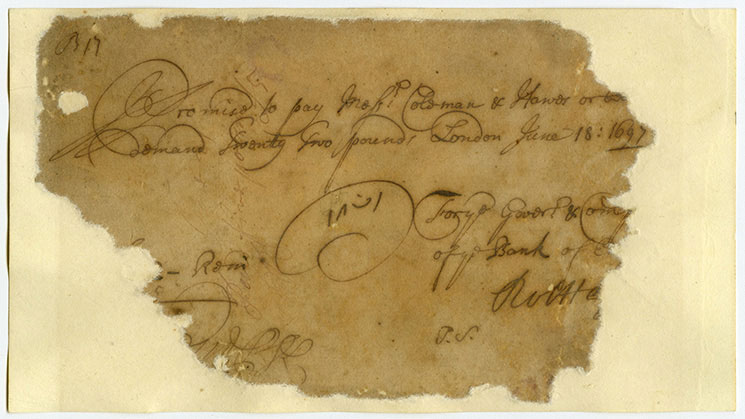Blog
Miranda Garrett, Collections and Exhibitions Manager
This is one of the earliest Bank of England notes in our collection. It’s dated 18 June 1697.
Miranda Garrett, Collections and Exhibitions Manager
This is one of the earliest Bank of England notes in our collection. It’s dated 18 June 1697.

Paper money in Britain evolved from the receipts that goldsmiths gave their customers for the money that they had deposited for safekeeping.
Goldsmiths held this money as ‘running cash’, (similar to a modern current account). They paid customers interest on the money they deposited, which the goldsmiths could also lend out with interest.
When the Bank of England was founded in 1694, it gave ‘notes’ to its customers as receipts for their deposits. These gradually turned into modern banknotes.
The original notes had the words ‘promises to pay’ on them. You can still see those words on our notes today.
To begin with, bank cashiers were told to issue notes for set denominations. But there was a lack of coins at that time, so many of the earliest notes were for odd sums and often included both shillings and pence.
This handwritten fragment is one of the earliest known examples of a running cash note issued by a Bank of England cashier. It promises to pay the bearer £22 (£3,964.99 today), which means it could be exchanged for that value of gold. The inscription shows that the deposit was withdrawn in two payments (£5 and £17). The handwriting is hard to read, but after a fair bit of squinting we’re pretty sure it’s addressed to ‘Messrs Coleman and Hawes’.